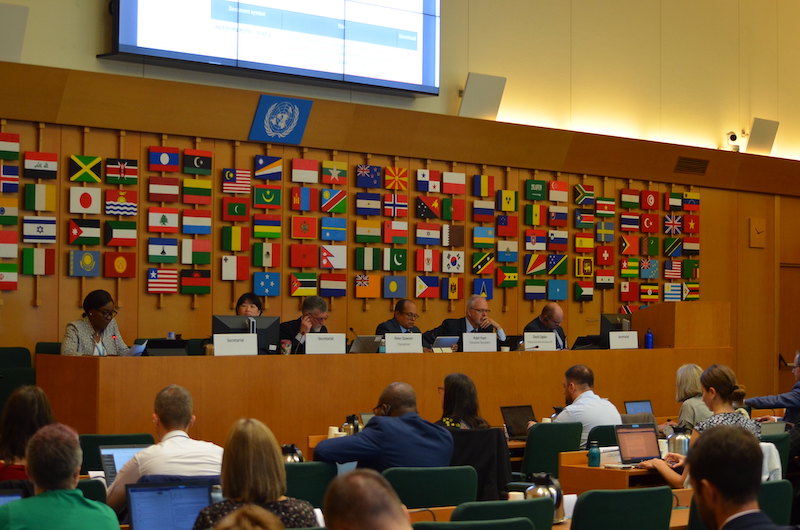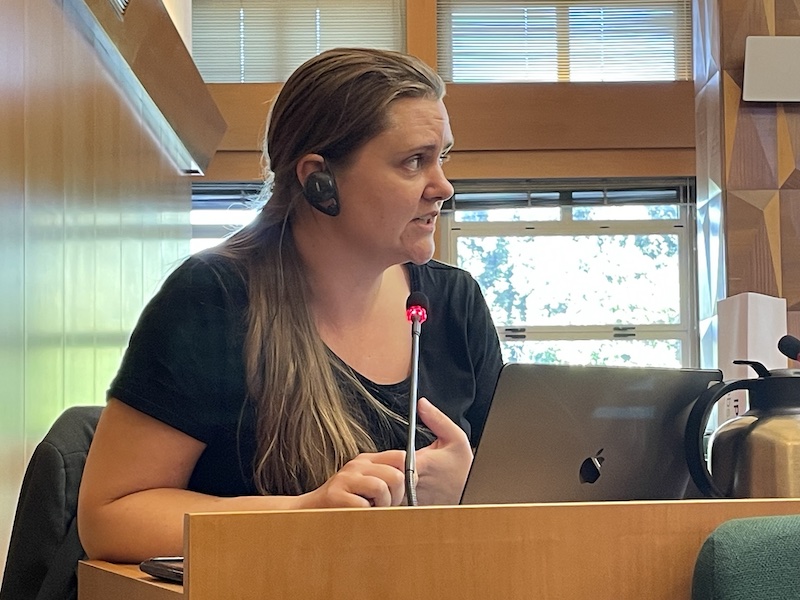POPRC19 Interventions
Opening intervention on Long-chain PFCAs
Presented by Dr. Sara Brosché, October 9, 2023
Thank you, Mr Chair.
First of all, for those of you don´t know IPEN, we´re a global network of public interest, civil society organizations in more than 125 countries.
Thank you to the drafters and working group for the hard work preparing this comprehensive Risk Management Evaluation.
We believe the RME provides all information needed to recommend a listing in Annex A of the Convention with no exemptions. It notes that alternatives are already available for most known applications, and that the benefits to health, agriculture and biota from taking global action on these substances are expected to outweigh the costs of implementing control measures.
Similar to others, we are also concerned about the long list of suggested exemptions. Any continued uses will mean continued exposures for consumers and workers as well as continued environmental contamination, leading to high societal costs, for example for waste treatment, remediation and health impacts. In recent IPEN studies we have seen that LCPFCAs are widely detected in consumer products around the world, including in clothes, popcorn packages and recycled materials. The results also shows that strong regulatory controls are needed that globally eliminate these substances.
We are also concerned about the extended timeline for many of the exemptions. This approach runs the risk of making it harder for industries that moved away from using these substances and rewarding companies slow to act. There is no indication that this would help prevent regrettable substitution, rather it would keep substances that are known to cause harm to human health and the environment in continued use. Practical experiences by experts show that substitution is indeed possible for the proposed exempted uses, and on a fairly short timeline. Any costs involved should be internalized.
Finally, we are very pleased to see one more group of PFAS on its way for listing under the Stockholm Convention. This grouping approach is by far the most effective and we hope that this can increasingly being used for nominations moving forward. It fits with the precautionary approach laid down in the Convention, and is also the most practical approach for national implementation.
IPEN support a recommendation to list of long chain PFCAs, their salts and related compounds in Annex A with no exemptions. We also support the proposal to include a recommend to avoid PFAS substitutes.
Thank You.

Opening Intervention on MCCPs
Presented by IPEN Co-chair Pamela Miller, October 9, 2023
Good morning, Mr. Chair, Members of the Committee, Secretariat, and Observers. My name is Pamela Miller, and I serve as Co-Chair of IPEN and Executive Director of Alaska Community Action on Toxics. We thank the UK, Chair of the intersessional working group on MCCPs and drafters of the RME.
We are concerned that there is a presumption that exemptions will be needed without adequate evaluation and consideration of available alternatives. Listings with extended time periods for exemptions have become the norm and this violates the spirit and intent of the Stockholm Convention. This is not necessary for MCCPs. The RME makes the case for availability of alternatives in all sectors of use. No exemptions should be necessary given the alternatives available and in use. If an exemption is recommended, it should be strictly time-limited with no more than 5 years as specified in Article 4 of the Convention.
The listing of MCCPs must have been anticipated when SCCPs were listed in 2017. MCCPs are a regrettable substitute. An extended time period for elimination should not be recommended. Exemptions, particularly extended ones, perpetuate harm to workers, other vulnerable populations such as women and children, and the global environment.
MCCPs are widely detected in the global environment, including remote regions. A recent study of levels of POPs in the breast milk of women of 53 countries found that MCCPs were the most abundant of the CP groups—stunningly, CPs overall contributed 50% of the total load of POPs. MCCPs are found in many household products, and in a recent IPEN study, we found both SCCPs and MCCPs in toys at concentrations that exceed proposed limit values for hazardous wastes.
We should not have to worry about whether a toy we give to our child might expose her to chemicals that endanger her health. Concerted and urgent actions must be taken to eliminate these harmful chemicals and ensure the safety of products for everyone and especially those most vulnerable. Labelling of stockpiles, products and wastes should be required.
Companies such as Metalloid Corporation have specialized in developing metal working fluids free of chlorinated paraffins for metalworking applications including aerospace, automotive, medical, and other manufacturing applications that require high temperatures and high pressures. Safety standards for flame retardancy in products can be met without the use of MCCPs.
We support listing of MCCPs without a cutoff limit for chlorination level and recommend listing of MCCPs in Annex A with no exemptions.

Opening intervention on Chlorpyrifos
Presented by Dr. Sara Brosché, October 9, 2023
Thank you, Mr Chair,
We would like to start by thanking the drafters and working group for preparing this updated Risk Profile.
The Risk Profile notes that the Committee has already concluded that Chlorpyrifos meets criteria for persistence, bioaccumulation, adverse effects and long-range transport. We believe the evidence was clear and sufficient already last year to conclude that global action is warranted, and now with the updated Risk Profile, that it is high time to move this forward to the RME stage.
Chlorpyrifos is a highly toxic pesticide that harms brain development in children, and even very low levels of exposure can cause significant and irreversible harm. It is persistent and has been widely detected in remote areas where it is not used, such as the Arctic environment and biota, where it is found in the air, water, fish, wildlife, and traditional foods of Arctic Indigenous Peoples. There is a special obligation toward preventing harm to Arctic Indigenous Peoples and ecosystems recognized in the Preamble to the Convention.
Finally, it is important that demands for moving Chlorpyrifos forward to the next stage are the same as for any other POPs. The Convention does not require a formal risk assessment to conclude that global action is warranted, and it clearly states that lack of full scientific certainty shall not prevent the proposal from proceeding.
IPEN therefore supports that chlorpyrifos moves forward to the risk management evaluation stage.

Opening Intervention on Long-range Environmental Transport
Presented by Therese Karlsson, October 10th, 2023
Thank you chair and good morning everyone,
We want to thank the drafters and the intersessional working group for this new draft. We believe that the draft has improved a lot and that the guidance could be adopted during this POPRC. There are however still a few things that we want to underscore that are important to keep in mind when evaluating LRET.
Firstly, it is important to undertake the same level of scrutiny when evaluating potential local sources as it does for evaluating long-range transport. The presence of local sources, like LRET, need to be supported by independent, peer reviewed, scientific references – just like evidence for LRET. Also, the presence of local sources does not mean the absence of long-range transport. This has been clearly shown for example in congener studies for PCB, PBDEs and pesticides in the Arctic that compared local and long-range studies.
Secondly, the presence of POPs in the Arctic is concerning regardless of concentrations at which they are found. As it was stated in one of the submissions - POP levels in the Arctic are under the Convention not required to exceed toxicological threshold values.
Thirdly, different POPs have different intrinsic properties and can therefore fulfill the criteria in different ways. POPRCs task is to evaluate whether there is a potential for LRET, not whether a chemical fulfills all potential transport pathways.
Finally, we note that the precautionary approach must continue to guide all work under the Convention and that this should be reflected throughout the document. Therefore, we agree with the drafters that the references to it in the guidance are relevant and suitable.

